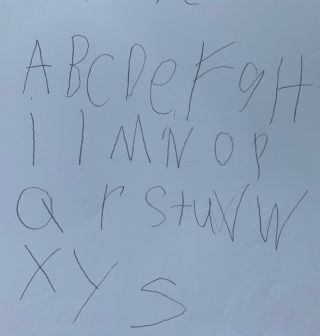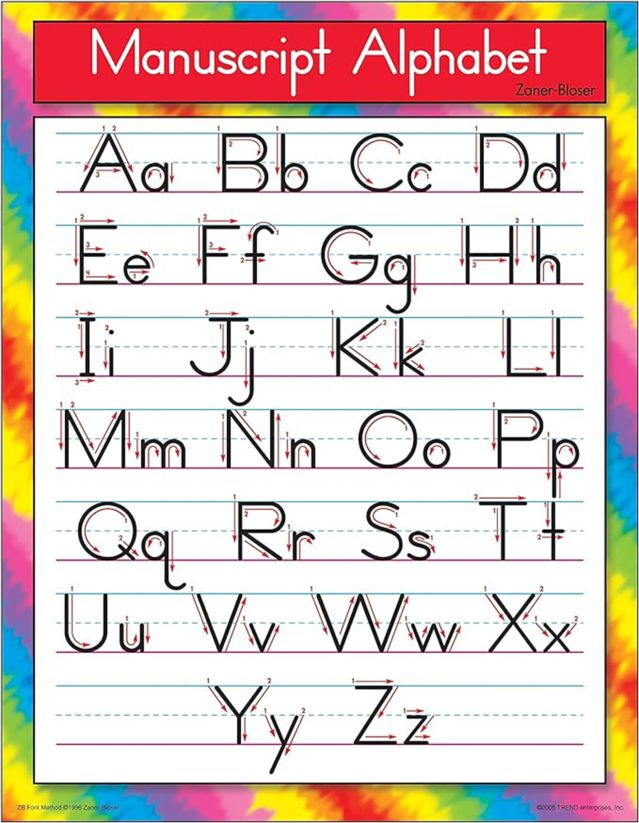Education
Why Schools Should Teach Handwriting in a Digital World
Brain imaging shows surprising benefits of handwriting for both kids and adults.
Posted June 18, 2024 Reviewed by Abigail Fagan
Key points
- Writing by hand is a cognitive benefit for both children and adults.
- There are important grade-school advantages for writing by hand over keyboarding.
- Both handwriting and keyboarding are essential for literacy in the computer age.
Should you be concerned about the current rage for keyboards in kindergarten to replace crayons, pencils, and paper? Are you worried if your third grader can’t write or read their name in cursive? What about your own habits? Do you write letters frequently or mostly tap out emails? Is your grocery list on your phone or handwritten on a piece of paper? For longer pieces—a job report, memo, letter to the editor, journal article or restaurant review—would the piece be more creative and invoke deeper thought had you written it out first by hand rather than dictated it by phone or typed it on a computer? Here are revelations from neuroscience for both children and adults regarding the benefits of writing by hand along with warning signs for scrapping the paper and pen.
For preschoolers, kindergarteners, and first graders, the complexity and time spent learning how to grip a pencil, position the paper, write their name by hand, and match written letters to sounds for spelling is worth the extra time and effort, according to the latest findings in neuroscience and cognition. Brain research shows that teaching handwriting has positive effects on letter learning, word reading, spelling and composing (James & Berninger, 2019).
These findings may not be appealing to many educators who now champion digital learning and electric keyboards. Surprisingly, handwriting benefits not only apply to children developing the foundations of literacy in their preschool and early grade years but also throughout elementary, middle, high school and beyond. Handwriting benefits also apply to whatever writing you do as an adult.
In an enlightening article on bringing back pencil gripping and shorthand entitled “Why Writing by Hand Beats Typing for Thinking and Learning,” journalist Jonathan Lambert lays out what he calls surprising benefits for pen and paper for both children and adults backed by the latest neuroscience and cognitive psychology even while considering the practical benefits of keyboarding for saving time, effort, and boosting productivity.
The Benefits of Writing By Hand and Warning Signs for Scrapping It
1. The benefits for handwriting start early.
Name writing in preschool kickstarts and strengthens neural circuitry in the brain used for developing reading and spelling and helps build essential foundational literacy knowledge. A child who scribbles but is unable to write their first name when entering kindergarten is likely already behind. There are numerous benefits to name writing in preschool. The child learns the concept that a written word is a visual representation of a spoken word, in this case, a visual representation of their name. Learning to write one's own name is not only a milestone but motivational for literacy learning. Beginners learn that English letters represent sounds, and in English the letters have both a name and a sound—the system is complex. They conceptualize that English writing goes from left to right (Reutzel, 2015). This is a lot of new information to process the first week of kindergarten if these essential foundations have not been taught or learned at home. Beyond that, research shows that learning consonant letter names and sounds is easier when they are mastered in preschool early in the child’s oral language development (Justice et al., 2006).
2. Can your child write the ABCs quickly and legibly from memory?
Remarkably, studies show that the ability to automatically write the alphabet in A-to-Z order legibly and from memory predicts spelling and composing skills up through grade six (Berninger, 1999)! Ask your first through sixth grader to write the alphabet in their best handwriting as quickly as they can. Here’s a sample of one child’s attempt following these instructions.

If you see ABC samples like this from first graders or older kids, it’s a tip-off that handwriting is not being properly modeled and explicitly taught. Red flags in this sample include the fact that some letters aren’t legible plus you see a confounding mix of upper and lowercase. From a cognitive perspective, the problem is that the child likely doesn’t have knowledge in long-term memory of how to form letters due to lack of instruction and practice. Using short-term memory to think about how to form letters and match them to sounds slows the writing process down and distracts later on when the child is retrieving letter knowledge for reading, spelling, or composing. Orthographic coding, storing single letters, letter groups, and syllable patterns for automatic retrieval in working memory along with sequential finger movements integrate circuitry for reading, spelling, and writing. Many teachers have not been trained to teach handwriting and spelling which are reciprocal (James & Beringer, 2009). In both cases, teachers and students need a grade-by-grade curriculum as provided in resources such as handwriting practice manuals and spelling books.
3. Lined paper and sequenced arrows are a boon for first grade instruction.
First graders should have advanced to writing on lined paper and at the end of composing a piece to be published there should be evidence of explicit teacher modeling and student handwriting practice. Students are taught where to start a letter in manuscript with sequenced letter arrow cues, such as in this Manuscript Alphabet sample.

4. Handwriting improves thinking
In “Why Writing by Hand Beats Typing for Thinking and Learning” Jonathan Lambert reports, “A slew of recent brain imaging research suggests handwriting's power stems from the relative complexity of the process and how it forces different brain systems to work together to reproduce the shapes of letters in our heads onto the page.” While further imaging research will be forthcoming, contrasting what happens when children engage in handwriting and the letter recognition/reading network in adults has been highly beneficial to researchers and holds promise for future research.
5. Handwriting benefits you
An adult benefit from handwriting is that it slows us down. Lambert’s article summarizes psychologist Audrey van der Meer’s ideas: “For adults, one of the main benefits of writing by hand is that it simply forces us to slow down. During a meeting or lecture, it’s possible to type what you’re hearing verbatim. But often, you’re not actually processing that information—you’re just typing in the blind. If you take notes by hand, you can’t write everything down ... The relative slowness of the medium forces you to process the information, writing key words or phrases and using drawing or arrows to work through ideas. You make the information your own, which helps it stick in the brain.” (Lambert, 2024. page 1).
A tangible benefit of adult handwriting is that it personalizes a piece and makes it more intimate. Contrast a handwritten recipe from a great grandmother with one simply typed out, or a note commemorating a special occasion versus a digital version sent in one click.
Science Says Teach Kids to Be Hybrid Writers
All schools should be teaching handwriting in the computer age and keyboarding skills. Here’s how brain imaging scientists Karen James and Virginia Berninger say we should do it. Teach all students to be hybrid writers. Imaging studies imply it’s best to introduce manuscript in preschool through grade 1, cursive in third and fourth grades for better spelling and composing, and two-hand touch-typing on a keyboard (not hunt and peck with one hand) in upper elementary and middle grades (James & Berninger, 2019. page 28). This hybrid approach will better activate the reading, spelling, and composing brain circuitry in all students at all grade levels. With this kind of evidence, how could we possibly think it’s wise to scrap handwriting?
References
Berninger, V. W. (2009). Highlights of Programmatic, Interdisciplinary Research on Writing. Learning Disabilities Research & Practice, 24(2), 69-80. https://doi.org/10.1111/j.1540-5826.2009.00281.x
James, K., & Berninger, V. (2019) Brain Research Shows Why Handwriting Should Be Taught in the Computer Age. Learning Difficulties Australia Bulletin, 51(1)25-30. https://thebehaviorrevolution.com/wp-content/uploads/2022/09/Brain-rese…
Justice , L.M., Pence , K., Bowles, R. B. & Wiggins, A. (2006). An Investigation of Four Hypotheses Concerning the Order by Which 4-Year-Old Children Learn the Alphabet Letters, Early Childhood Research Quarterly, 21( 3 ) 374 – 389.
Reutzel, R. (2015), The Reading Teacher, 69(1) 14–24. https://www.uwyo.edu/wsup/_files/docs/esl_conference/reutzel-2015-the_r…




